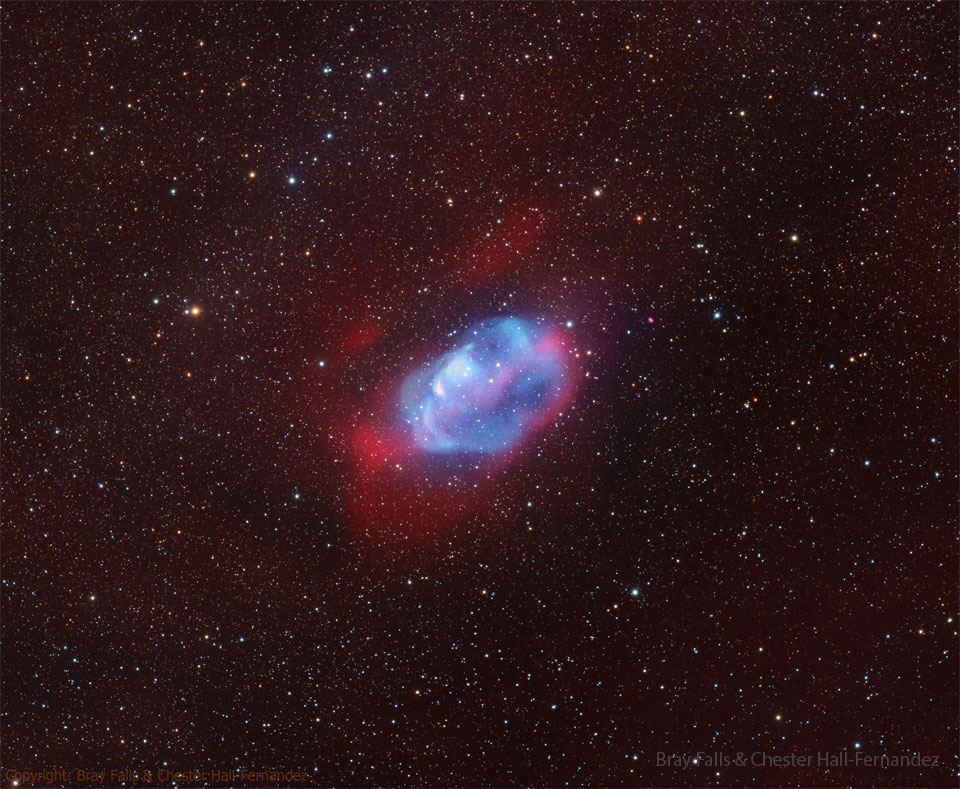2023年8月22日
The Pistachio Nebula
Credit & Copyright: Bray Falls & Chester Hall-Fernandez
Explanation: This nebula had never been noted before. Newly discovered nebulas are usually angularly small and found by professionals using large telescopes. In contrast, the Pistachio Nebula was discovered by dedicated amateurs and, although faint, is nearly the size of the full Moon. In modern times, amateurs with even small telescopes can create long exposures over sky areas much larger than most professional telescopes can see. They can therefore discover both previously unknown areas of extended emission around known objects, as well as entirely unknown objects, like nebulas. The pictured Pistachio Nebula is shown in oxygen emission (blue) and hydrogen emission (red). The nature of the hot central star is currently unknown, and the nebula might be labeled a planetary nebula if it turns out to be a white dwarf star. The featured image is a composite of over 70 hours of exposure taken in early June under the dark skies of Namibia.
Tomorrow’s picture: comet rain
开心果星云
影像提供与版权: Bray Falls & Chester Hall-Fernandez
说明: 这个星云先前未有观测记录。新发现的星云通常张角偏小,而且发现者为使用大望远镜的专业人士。以往例有别的是,开心果星云是由执着的业余天文爱好者所发现,而它虽然昏暗,但张角几乎和满月相当。在现代,使用小望远镜的业余人士也能对天空进行长曝光取像,而且所涵盖的范围也远大于大多数的专业级望远镜。因此,他们得以发现已知天体周围先前未知的外展辐射区,以及先前完全不知的天体,诸如星云。这幅开心果星云影像,所呈现的是来自氧(蓝色)和氢的辐射(红色)。此星云炽热的中心星之性质目前尚不明,如果它经证实为白矮星,那么这个星云的分类会是行星状星云。这幅主题影像,是由今年6月初摄于纳米比亚幽暗天空下、总曝光时间70多个小时的数据组合而成。 (Pistachio Nebula 开心果星云)
明日的图片: comet rain







